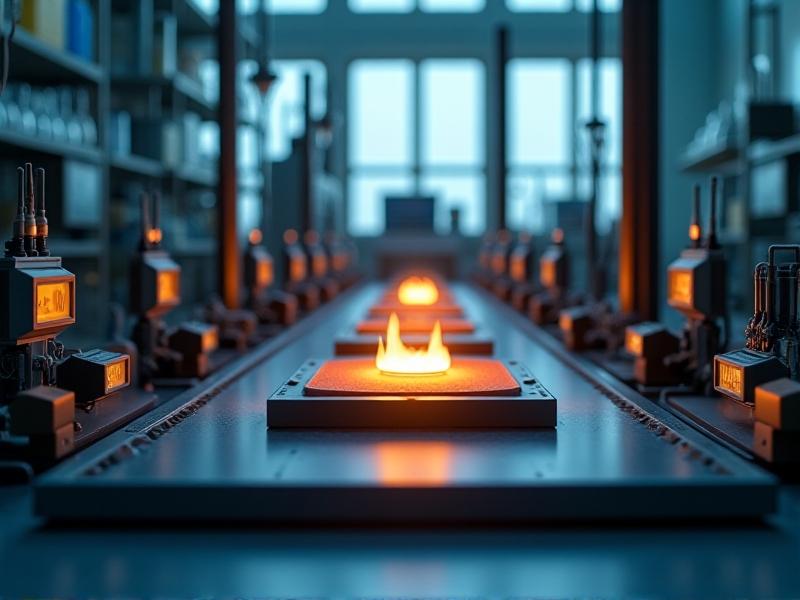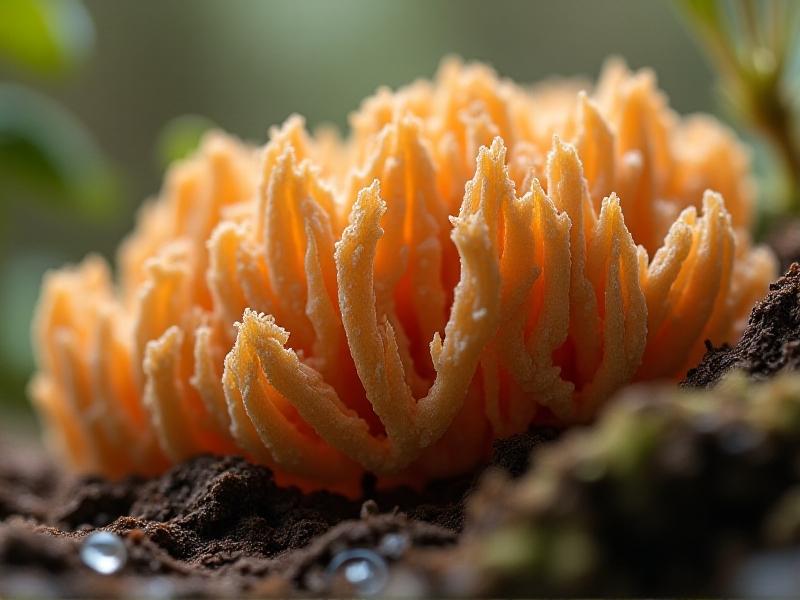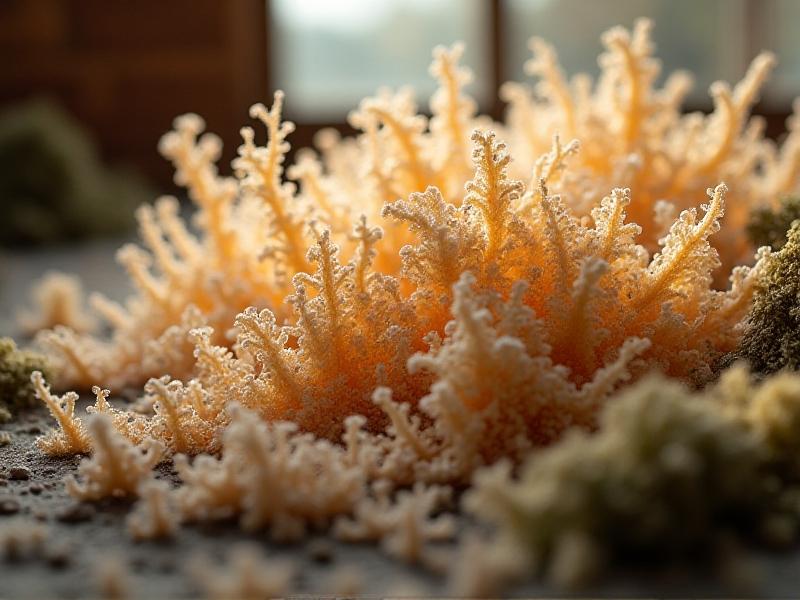Flame Spread Index Improvements Through Mycelium Modification
Introduction to Flame Spread Index and Mycelium
The Flame Spread Index (FSI) is a critical metric used to evaluate the surface burning characteristics of materials, particularly in construction and interior design. It measures how quickly flames can spread across a material's surface, providing insights into fire safety and risk management. Traditional materials like wood, plastics, and textiles often have high FSIs, making them more susceptible to rapid flame propagation. However, recent advancements in biomaterials have opened new doors for improving fire safety. Among these, mycelium—the root-like structure of fungi—has emerged as a promising candidate for modifying and enhancing the flame resistance of materials.
Mycelium is not only biodegradable and sustainable but also possesses unique properties that can be harnessed to improve fire safety. Its fibrous structure, combined with its ability to bind with other materials, makes it an ideal candidate for creating composites with enhanced flame retardancy. This article explores how mycelium modification can lead to significant improvements in the Flame Spread Index, offering a greener and safer alternative to traditional materials.

The Science Behind Flame Spread Index
Understanding the Flame Spread Index requires a deep dive into the science of fire behavior. The FSI is determined through standardized tests, such as the ASTM E84 or UL 723, which measure the rate at which flames travel across the surface of a material. Materials are classified into three categories based on their FSI: Class A (0-25), Class B (26-75), and Class C (76-200). Class A materials, with the lowest FSI, are considered the most fire-resistant and are often required in high-risk areas like schools, hospitals, and public buildings.
Several factors influence a material's FSI, including its chemical composition, density, and surface texture. Materials with high organic content, such as wood, tend to have higher FSIs because they provide more fuel for combustion. Conversely, inorganic materials like gypsum or concrete have lower FSIs due to their non-combustible nature. Mycelium, with its organic yet fibrous structure, presents an interesting middle ground. Its natural properties can be modified to reduce flammability, making it a viable option for lowering the FSI of composite materials.

Mycelium as a Sustainable Material
Mycelium has gained attention in recent years as a sustainable alternative to synthetic materials. It is grown from fungal spores in controlled environments, using agricultural waste as a substrate. This process is not only eco-friendly but also highly efficient, producing materials with minimal environmental impact. Mycelium-based products are already being used in packaging, insulation, and even furniture, showcasing their versatility and potential.
From a fire safety perspective, mycelium's natural composition offers several advantages. Its high water content and fibrous structure can slow down the spread of flames, while its ability to bind with other materials allows for the creation of composites with enhanced fire-resistant properties. Additionally, mycelium can be treated with natural flame retardants, further improving its performance in fire safety applications. By leveraging these properties, researchers and manufacturers can develop materials that meet stringent fire safety standards while remaining sustainable and environmentally friendly.

Modifying Mycelium for Improved Flame Retardancy
Modifying mycelium to enhance its flame retardancy involves a combination of biological, chemical, and engineering approaches. One method is to genetically engineer mycelium to produce natural flame-retardant compounds, such as phosphates or silicates. These compounds can be integrated into the mycelium's structure, providing inherent fire resistance without the need for external treatments.
Another approach is to create mycelium-based composites by combining it with other fire-resistant materials, such as clay, silica, or cellulose. These composites can be designed to have a lower FSI while maintaining the desirable properties of mycelium, such as biodegradability and strength. Additionally, surface treatments using natural flame retardants, like borates or tannins, can further enhance the material's fire performance. These modifications not only improve the Flame Spread Index but also open up new possibilities for using mycelium in high-risk applications, such as construction and transportation.
Applications of Mycelium-Modified Materials
The potential applications of mycelium-modified materials are vast, particularly in industries where fire safety is a top priority. In construction, these materials can be used for insulation, wall panels, and flooring, providing a sustainable alternative to traditional fire-resistant materials like gypsum or mineral wool. Their lightweight nature and ease of installation make them an attractive option for both new builds and retrofits.
In the transportation sector, mycelium-based composites can be used for interior components, such as seat cushions, wall linings, and overhead compartments. These materials not only improve fire safety but also reduce the overall weight of vehicles, leading to increased fuel efficiency. Additionally, the use of mycelium in packaging can provide a fire-resistant, biodegradable alternative to plastic, reducing the environmental impact of shipping and storage. As research and development continue, the range of applications for mycelium-modified materials is expected to expand, offering innovative solutions for a safer and more sustainable future.
Challenges and Future Directions
Despite its potential, the widespread adoption of mycelium-modified materials faces several challenges. One of the primary concerns is scalability. While mycelium can be grown relatively quickly, producing it on an industrial scale requires significant investment in infrastructure and technology. Additionally, ensuring consistent quality and performance across batches is crucial for meeting industry standards.
Another challenge is public perception and acceptance. As a relatively new material, mycelium may face skepticism from manufacturers, regulators, and consumers. Educating stakeholders about its benefits and safety is essential for overcoming these barriers. Furthermore, ongoing research is needed to optimize mycelium's properties and explore new applications. Collaboration between scientists, engineers, and industry leaders will be key to unlocking the full potential of this innovative material.
Conclusion: A Greener Path to Fire Safety
Mycelium modification represents a groundbreaking approach to improving the Flame Spread Index, offering a sustainable and effective alternative to traditional materials. By leveraging mycelium's unique properties, researchers and manufacturers can develop materials that not only enhance fire safety but also contribute to a greener, more sustainable future. While challenges remain, the potential benefits of mycelium-based materials are too significant to ignore. As technology advances and awareness grows, mycelium could play a pivotal role in shaping the future of fire safety and sustainable design.








